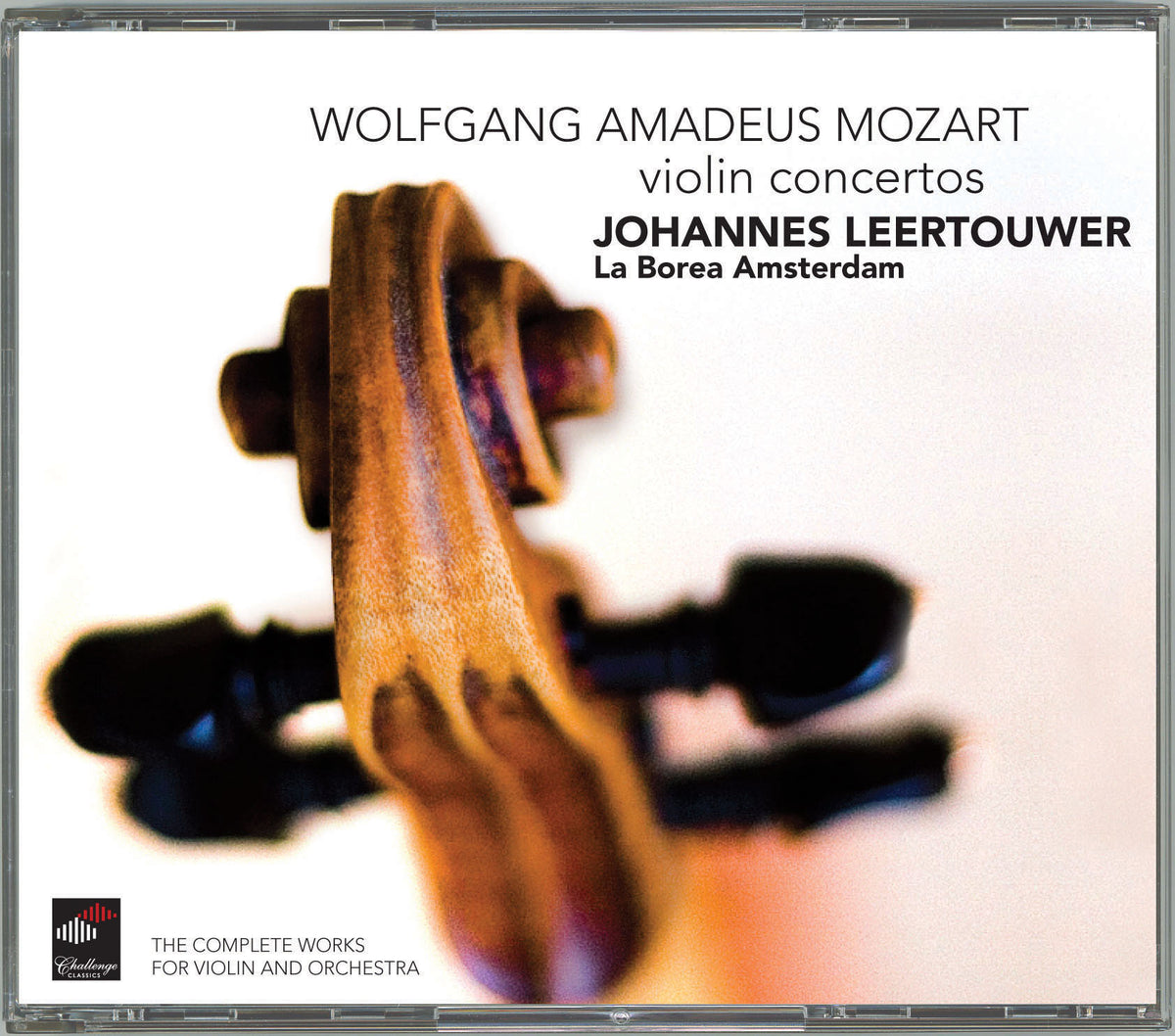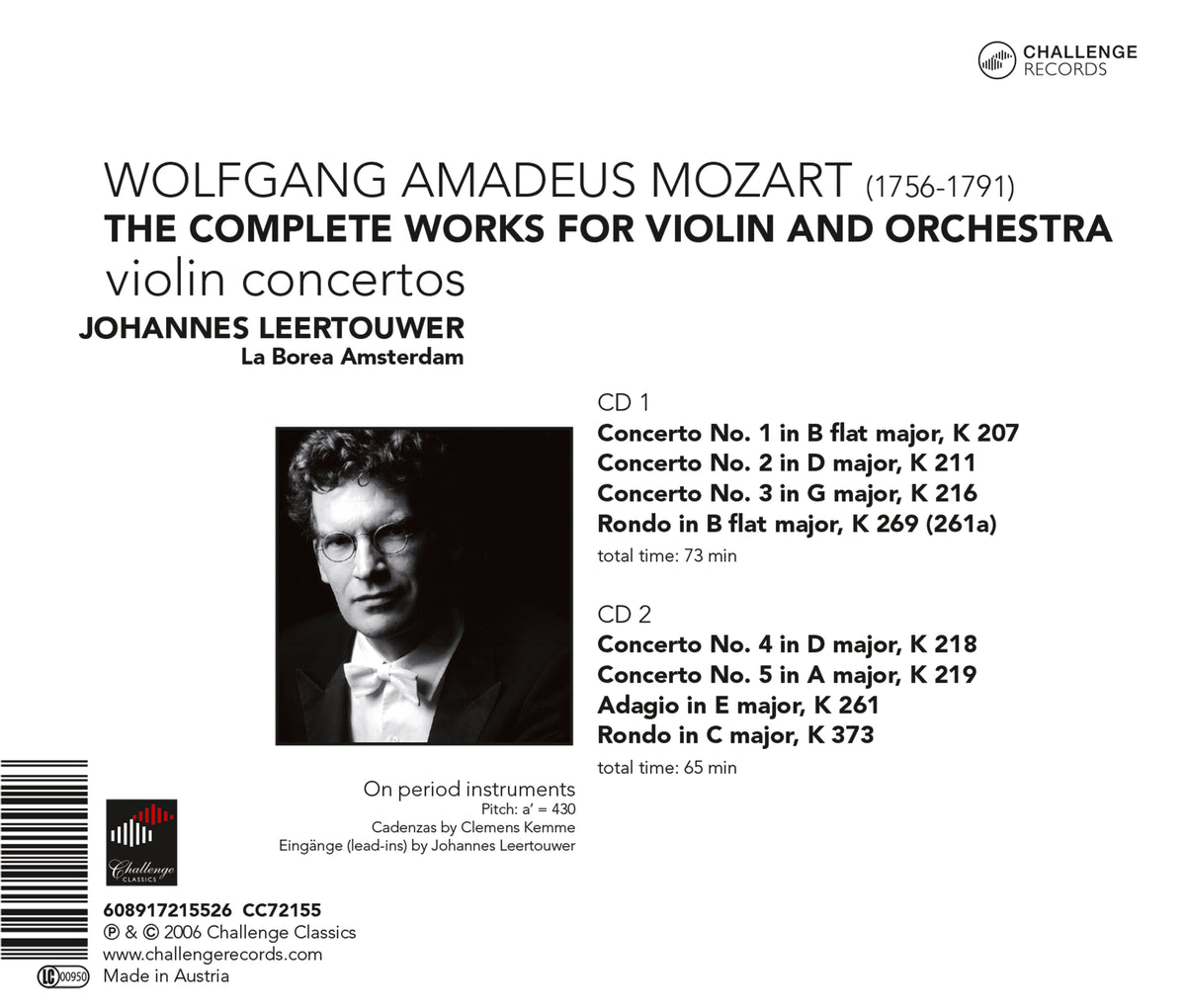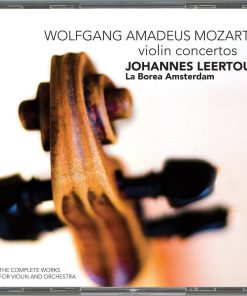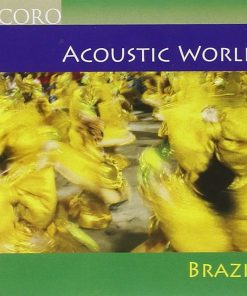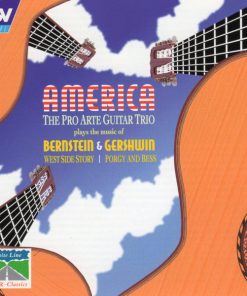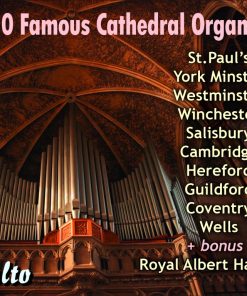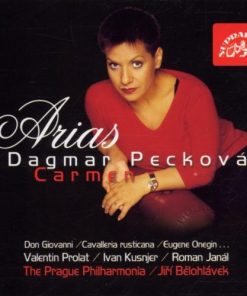MOZART: Complete Works For Violin & Orchestra – Johannes Leertouwer, La Borea Amsterdam (2 CDS) CHALLENGE
$ 2,99 $ 1,79

Mozart composed his five violin concertos as a group, in quick succession, in 1775, his nineteenth year. (The first concerto was probably written earlier.) He was at that time a young but experienced composer: he had already written around 30 symphonies, nine operas, eight masses and a great deal of dance music and chamber music. But his experience with solo concertos was still quite limited.
“With the passing of years it has become increasingly clear to me that Mozart, who was still active as a violinist during the period when he was writing his violin concertos, was used to exploiting the qualities of different registers in his compositions.(-) Mozart’s text evoked a colourful response from my instrument, from which I could then benefit as a performer. Articulation was another area where my choices were guided to a substantial extent by the possibilities of the instrument. In this respect my Amati is like an inspiring teacher, encouraging me to apply and convert into sound the knowledge I have accumulated from other historical sources”
Johannes Leertouwer is a violinist and conductor with a distinct personal style and a very broad repertoire. As one of the leading Dutch specialists in the interpretation of 18th century repertoire he conducts both traditional symphony orchestras and period instrument groups and his repertoire ranges from baroque to contemporary. As a guest conductor he works regularly with the renowned choir and orchestra of the Netherlands Bach Society, the North Netherlands Orchestra, and the Osaka Symphoniker of Japan. Since 1998 he has been the artistic director and principal conductor of the Netherlands Youth String Orchestra. He made a large number of CD recordings. He teaches violin at the Conservatory of Amsterdam since 1990.
La Borea Amsterdam was founded by Johannes Leertouwer in 1990. Since then the ensemble has realised a select number of unusual projects in co-operation with the Holland Festival of Early Music, Studium Chorale in Maastricht and other organisations. La Borea is made up of leading musicians specialising in historical performance on period instruments.

01. ‘Concerto No. 1 in B flat major, K 207’: I. [Allegro moderato] 07:31
02. ‘Concerto No. 1 in B flat major, K 207’: II. Adagio 07:07
03. ‘Concerto No. 1 in B flat major, K 207’: III. Presto 05:29
04. ‘Concerto No. 2 in D major, K 211’: I. Allegro moderato 09:23
05. ‘Concerto No. 2 in D major, K 211’: II. Andante 06:51
06. ‘Concerto No. 2 in D major, K 211’: III. Rondeau: Allegro 04:31
07. ‘Concerto No. 3 in G major, K 216’: I. Allegro 09:23
08. ‘Concerto No. 3 in G major, K 216’: II. Adagio 08:16
09. ‘Concerto No. 3 in G major, K 216’: III. Rondeau: Allegro – Andante – Allegretto – Tempo primo 06:49
10. Rondo in B flat Major, K 269 (261a): Rondeau: Allegro 07:48
Disc #2
01. Concerto No. 4 in D major, K 218: I. Allegro 08:43
02. Concerto No. 4 in D major, K 218: II. Andante cantabile 06:47
03. Concerto No. 4 in D major, K 218: III. Rondeau: Andante grazioso – Allegro ma non troppo 07:41
04. Concerto No. 5 in A major, K 219: I. Allegro aperto – Adagio – Allegro aperto 09:41
05. Concerto No. 5 in A major, K 219: II. Adagio 09:21
06. Concerto No. 5 in A major, K 219: III. Rondeau: Tempo di menuetto – Allegro – Tempo di menuetto 09:11
07. Adagio in E major, K 261: Adagio 07:46
08. Rondo in C major, K 373: Rondeau: Allegretto grazioso 05:58
Fast Shipping and Professional Packing
Due to our longstanding partnership with UPS FedEx DHL and other leading international carriers, we are able to provide a range of shipping options. Our warehouse staff are highly trained to pack your goods exactly according to the specifications that we supply. Your goods will undergo a thorough examination and will be safely packaged prior to being sent out. Everyday we deliver hundreds of packages to our customers from all over the world. This is an indication of our dedication to being the largest online retailer worldwide. Warehouses and distribution centers can be located in Europe as well as the USA.
Orders with more than 1 item are assigned processing periods for each item.
Before shipment, all ordered products will be thoroughly inspected. Today, most orders will be shipped within 48 hours. The estimated delivery time is between 3-7 days.
Returns
The stock is constantly changing. It's not entirely managed by us since we are involved with multiple parties such as the factory and our storage. The actual stock can fluctuate at any time. Please understand it may happen that your order will be out of stock when the order is placed.
Our policy is valid for 30 days. If you haven't received your product within 30 days, we're not able to issue either a return or exchange.
You are able to return a product if it is unused and in the same condition when you received it. It must also still remain in the original packaging.
Related products
MUSIC CD
